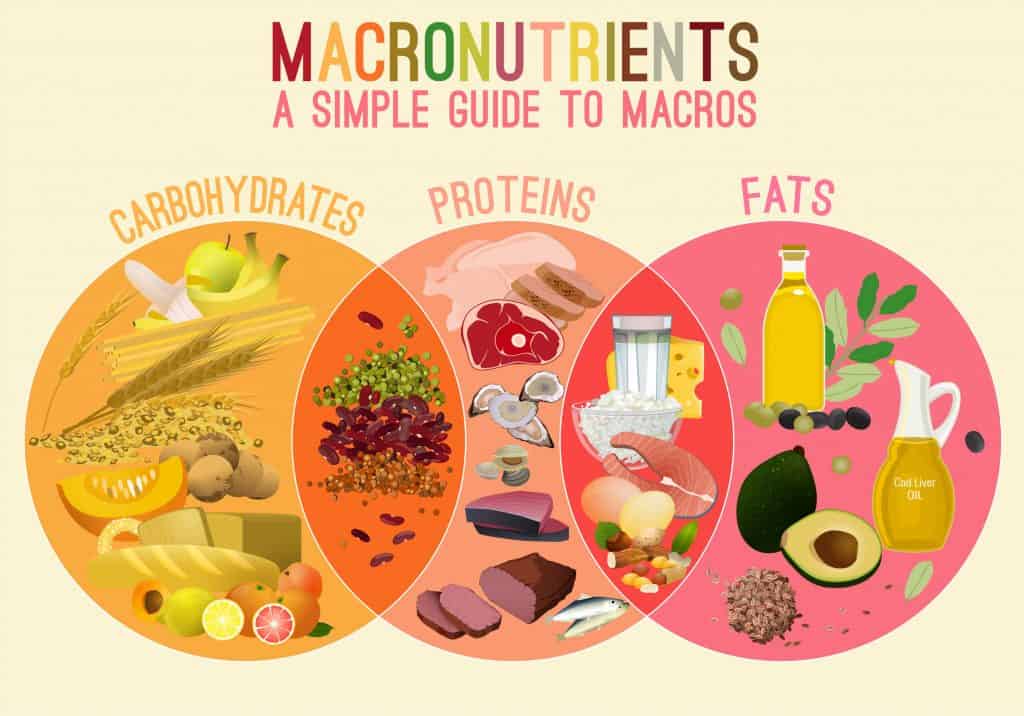How to count macronutrients
Posted by Prescription Hope - See Editorial Guidelines (Last Updated On: Mon Jul 10 2023)
Being healthy is as much about your eating habits as much as it is about being active and drinking medicine as needed. Even in troubling times, there’s still much to be grateful for, like in this post.
Thankfully, not all hope is lost and a combination of medicine, exercise, and diet can boost your immunity. Sometimes, your doctor can recommend a specific diet for you, one that will play nice with your prescription and health needs.
But what exactly are macronutrients and why do we need to count them?
What are macronutrients in the first place?

This might be the first time you’re hearing about macronutrients, but we assure you, you most likely already know what these are. Think of the things that you eat that have calories — they’re all made up of carbs, proteins, and fats.
These are your macronutrients.
Micronutrients are things like vitamins and minerals you can find in your food supplements, but that’s a story for another time.
Related: What are Phytonutrients?
Why do we count macros?
The reason why we count macros is because of one of the basic principles of nutrition: Calories In, Calories Out (CICO). We want to make sure that the amount of calories we’re consuming is not too little, or we’ll end up undernourished. Likewise, if we eat too much, we’ll end up gaining weight.
In other words, the first reason why we count macros is to be in a healthy weight range, as our immunity gets weaker when we get to the extreme ends of this spectrum.
But that’s the reason for counting calories, not specifically macros.
The other reason for counting macros is because the composition of the calories we eat plays a role in health too. You can, theoretically, eat your recommended daily calories in a McDonald’s meal, eat nothing else, and actually lose weight because of CICO.
But the problem is when you do this, your macros are unbalanced, hence why there are times when counting macros is preferred over counting calories.
People with diabetes, for example, need to watch the amount of carbohydrates they consume. If you have high cholesterol, then you need to watch your fat intake. If you want to pack some muscle, then protein is the name of the game.
So on and so forth. We count macros to ensure that we’re being balanced with the way that we eat.
Related: What is Gut Health and How to Improve it?
How to count macronutrients
1. First, figure out how many calories you need to eat.
The easiest way to do this is by using a macronutrient calculator. If you find one, it can do this for you automatically.
There’s a lot of macronutrient calculators out there, so choose the one you like. If you don’t want to bother with searching though, Total Shape has a macro calculator in their site as well.
But if you want to get into it, the most common formula believed to be most accurate for determining daily caloric needs is the Mifflin-St. Jeor equation (for BMR or Basic Metabolic Rate):
BMR (kcal / day) = 10 x weight (kg) + 6.25 x height (cm) – 5 * age (y) + z (kcal / day),
where z is +5 for males and -161 for females.
The result is your BMR or basic metabolic rate. After this, you multiply this number by a factor dependent on how active your lifestyle is:
Sedentary = x 1.2 (little to no exercise)
Lightly active = x 1.375 (light exercise less than 1-3 days a week)
Moderately active = x 1.55 (moderate 4-6 days a week)
Very active = x 1.725 (hard exercise 7 days a week)
Extra active = x 1.9 (strenuous exercise two or more times per day)
Your BMR multiplied by your activity factor equals your TDEE or Total Daily Energy Expenditure. If you want to gain, the number of calories you need to eat should be greater than your TDEE. If you want to lose weight, then you must eat less calories than your TDEE.

2. Decide on a macro division/breakdown recommended for you.
Depending on your diet, the proportions of macros will be different, but keep in mind that whatever the division is, it has to add up to 100%
Fats: 20-35% of total daily calories
Proteins: 10-35% of total daily calories
Carbohydrates: 45-65% of total daily calories
Always consult with your doctor or nutritionist to find the recommended breakdown for your health and fitness goals.
3. Track what you eat
To ensure that you’re accurately computing your macros, you need to write down what you eat. Keep a food journal on your person at all times to ensure you won’t fall off the wagon. Aside from having a notebook or app to track your intake, a kitchen scale will help you take accurate weights for your diet.
The most convenient way to track your diet is through apps, so take your pick from the variety of free and paid apps available for your device. What’s important is to accurately weigh and note everything you eat.
4. Take note of how many calories are in each macronutrient.
Not all macros are created equal! Take note that for every gram of protein and carbs, you’re eating 4 calories. Since fat is more calorie-dense, it nets to 9 calories for every gram of fat you eat.
Again, that’s:
Carbohydrates: 4 calories/gram
Proteins: 4 calories/gram
Fats: 9 calories/gram
5. Sample calculation
Suppose your macro breakdown is as follows:
Carbs: 45% total calories
Protein: 35% total calories
Fat: 20% total calories
And you can consume 2000 calories per day.
How many grams of each macronutrient can you consume in a day?
Steps:
- Get total number of calories
- Multiply by % macro breakdown
- Convert calories to grams
The calculation for every macronutrient will be as follows:
Carbohydrates:
(2000 calories)*(45%)=900 calories
900 calories/(4 calories/gram of carbs) = 225 grams of carbohydrates per day
Proteins:
(2000 calories)*(35%)=700 calories
700 calories/(4 calories/gram of protein) = 175 grams of protein per day
Fats:
(2000 calories)*(20%)=400 calories
400 calories/(9 calories/gram of fat) = ~44 grams of fat per day
Which means your diet prescription in this case would be 225 g of carbohydrates, 175 g of protein, and 175 g of fat daily.
Takeaway
Counting macronutrients can be challenging at first. But understanding the concepts behind them, and doing them step-by-step will turn you into an expert in no time.
And if it’s challenging still, it helps to know that there are online calculators that can do the work for you. Prescription Hope’s medication access service can help you obtain medications for just $60.00 a month through Prescription Hope’s medication access service to help assist you with your fitness goals. Contact us today!


